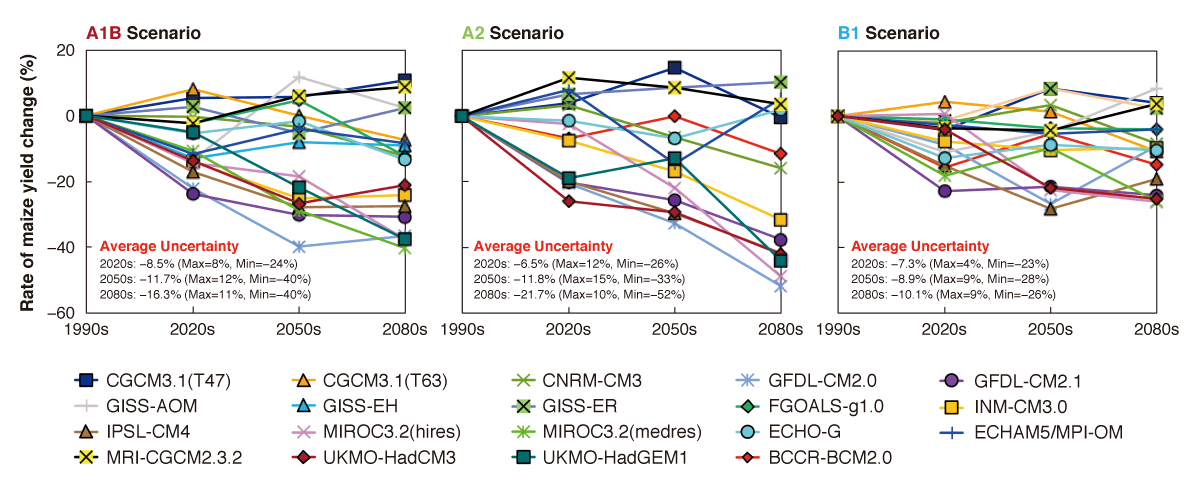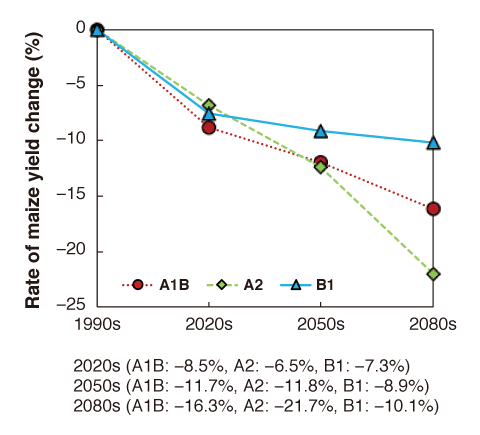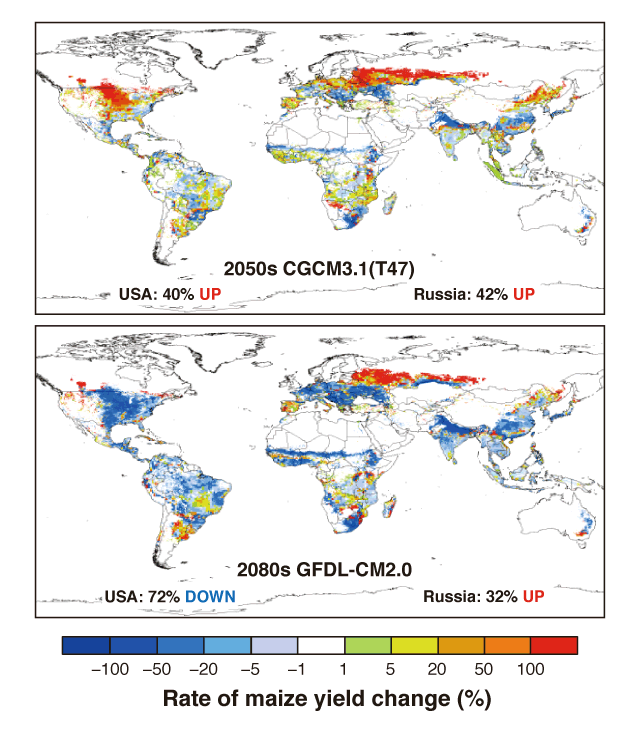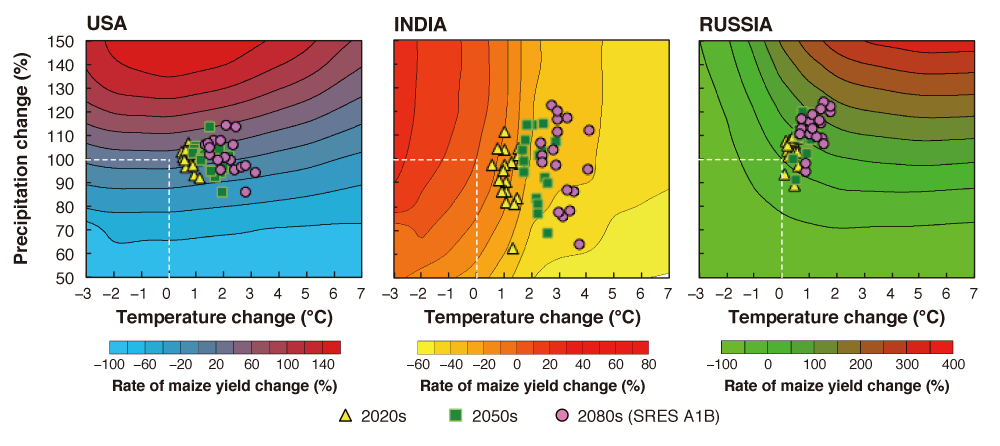Project 2Climate change and global risk assessment
Results of FY 2011
As one way to understand the uncertainty related to climate change impacts, we estimated the change in crop productivity considering the uncertainty in climate change projection. The results below show the estimated change in global maize productivity. As elements of uncertainty in the impact estimation, we took into account a number of future GHG emission scenarios and various climate models, simulated changes in maize productivity under each combination of emission scenario and climate model, estimated quantitatively the uncertainties derived from each element and compared them. The results showed that the range of uncertainty depending on the choice of climate model was comparable to the range of uncertainty depending on the different estimates of future GHG emissions. Therefore, this uncertainty cannot be ignored when making decisions about global warming countermeasures.
To help us to perceive climate change as more realistic and concerning all of us, we continue our work to develop methods to show the implications of climate change impacts while considering social economic factors, and aim to provide information which will support the decision making about global warming countermeasures.

The graphs show the rate of change in world maize productivity (compared to 1990) based on the average productivity of the top 13 countries for each emission scenario, estimated by inputting CMIP3 climate scenarios into the GAEZ crops productivity model. The estimated change in maize productivity has uncertainty derived from the choice of different climate models. The largest range of uncertainty (approx. 62%; from −51.7% to 10.3%) is for the A2 scenario in the 2080s.

The graph shows the average value of the rate of change in world maize productivity calculated on the basis of the CMIP3 climate scenarios for each GHG emission scenario. The estimation uncertainty resulting from the different emission scenarios increases over time and by 2080 its range is predicted to be approximately 11.6% (from −10.1% to −21.7%).

The map shows the spatial distribution of the change of world maize productivity based on the highest average productivity of the top 13 countries estimated for the 2050s with the CGCM3.1(T47) model, and the lowest average productivity estimated for the 2080s with the GFDL-CM2.0 model, both assuming the SRES A2 scenario. Looking at regional characteristics, even if the simulation period and emission scenario are the same, maize productivity will be different depending on the climate model.

The figure shows the country-specific results of the sensitivity analysis of maize production to changes in temperature and precipitation, as well as the plot of the change in temperature and precipitation for the different climate models with the A1B scenario. In the US, maize productivity is more sensitive to changes in precipitation, whereas in India it is more sensitive to changes in temperature. In Russia, maize productivity is sensitive to both temperature and precipitation, and productivity is predicted to increase drastically with the simultaneous increase of temperature and precipitation.



